Two adult rhinos and a calf lie under a tree 50 meters off the road. It’s a nice sighting for me in the midday heat of Kruger National Park in South Africa — my second of rhinos in two days.
On the eastern horizon behind their sleeping forms lies a dark blue line; the Lembobo Mountains mark the border between South Africa and Mozambique. Those deadly hills produce poaching teams from Mozambican villages quicker than Kruger’s rhino antipoaching teams can catch them.
The teams are put together from queues of poor Mozambican men lining up for the rhino horn money that is flooding in from international syndicates based primarily in Vietnam and China. More poachers are probably mobilizing up there for incursions tonight.

But the rhinos’ enemies come not only from the east. Just as many come from the South African townships on Kruger’s western border. SANParks, South Africa’s national parks agency, estimates that 15 rhino poaching teams operate in Kruger every night. It’s been a full moon so poaching activity has been hectic. The eyes of Lembobo watch.
The rhinos’ ears flick with every fly. The adult female stands. Her horn makes a silhouette against the straw-coloured haze. She wanders away, turning back and fourth like a dog to urinate. It gushes for a long time. Then she treads back to the shade and flops down in the dust, but her rest is fitful.
While I watch, a dozen cars stop to see what I’m looking at. A mix: Afrikaners, blacks, foreigners, Asians, young and old, cheap cars and expensive. A few linger but there’s little to see. Only rhino ears flicking. I look at some cars with suspicion. After 30 minutes of waiting I get my photo opportunity — all three rhinos stand, start grazing. Click, click, click. The male comes forward and seems to look at the three cars, including mine, watching, click, but I know he’s too blind to see us. Then he turns away, click, to the Lembobo Mountains and they fade into the veldt together.
I’ve observed at least 20 people stop to look and photograph. It’s nothing special to see rhinos here because Kruger has the biggest population of southern white rhinos in the world — between 8,400 and 9,600 animals, according to a 2013 SANParks census. Southern white rhinos (Ceratotherium simum simum) are the only rhinos not listed by the IUCN as endangered. They are “near threatened.” But if one of those 20 people were a spotter for a rhino-horn syndicate, this little group could all be dead tomorrow.
South Africa is in the eye of a global rhino-poaching cyclone, with 393 animals slaughtered in the first third of 2015 — an 18 percent increase compared to 2014. At the dead center of the storm is Kruger, where poachers killed 290 between January and April this year. Things have gotten so bad that conservation groups are moving rhinos out of the country to safer havens in Botswana.
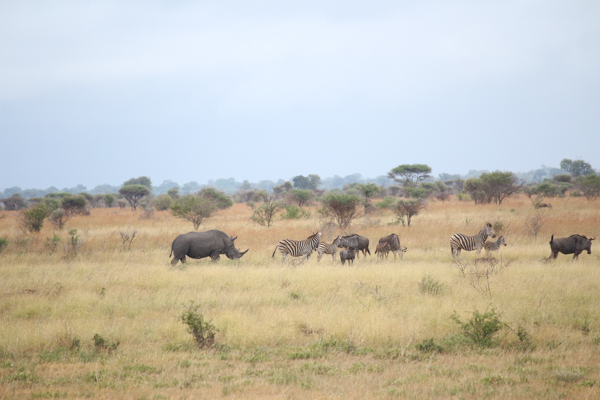
The poaching crisis is driven by demand for rhino horn in China and to a greater extent Vietnam. Rhino horn was an ancient remedy in traditional Chinese medicine. It apparently did have some medicinal capacity to reduce fever and treat poison, but less than that of other herbal cures. Rareness was highly valued, however, so what rhino horn lacked in efficacy it made up for with mystique. Today, thanks to the media, internet, and new riches and exploding human populations in Vietnam and China, the medicinal uses of rhino horn are much more varied and untested than under traditional systems. Among all the uses that have emerged in Vietnam in the last 10 years — hangover cure, men’s potency aid, general health elixir, gift, and status symbol — the use that appears to have boosted demand the most was the cancer cure.
The chances of a cancer patient getting lifesaving treatment in a developing country like Vietnam are about the same as being given the right of way on a Saigon roundabout. Bad. So snake-oil dealers came up with the rhino-horn cancer cure. An unfounded rumour of a Hanoi politician who cured his tumors with rhino horn went viral. In 2011 I went to Ho Chi Minh City’s biggest cancer hospital and saw the desperate gamble cancer sufferers were making. Rural village people who literally didn’t have enough money to buy a pencil for their children’s schooling were paying rhino-horn dealers outside the hospital roughly $200 for a small cube of horn, more money than they’d see in a year. Often it wasn’t even real horn.
The price of horn in Vietnam is somewhere between $25,000 and $45,000 per kilogram, and sometimes it hits the much-cited price of $65,000, according to Annette Hübschle-Finch, a researcher in Illegal markets & transnational organised crime at the University of Cape Town. She came up with those numbers based on 2013 interviews she conducted with rhino-horn consumers, doctors, and traders in Vietnam, as well as Asian smugglers and intermediaries in South Africa and Mozambique. Nebulous the price of rhino horn may be, but by any measure it’s high—high enough to motivate a brisk, no-holds-barred black-market international trade.
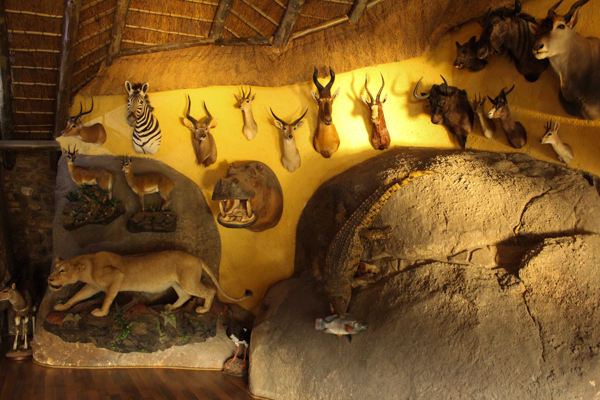
The syndicates don’t see poaching as the only source of rhino horn. For centuries trophy hunters have been decimating rhino populations throughout Africa. Thousands of trophies hang on walls in the U.S. and Europe, and in recent years, rhino horns sitting in museums, auction houses, antique shops, or taxidermists’ studios have been targeted by organised crime groups.
Another way the syndicates in Vietnam and China have been getting the horn is through “pseudo hunts.” These began around 2003, when a Vietnamese who’d never hunted before paid a South African hunting outfitter a bit extra to organize a trophy hunt for rhino, as per usual, and also to assist in the killing, which is decidedly not usual. Professional hunters caught on to the sweet deals the Vietnamese were offering and began pushing their services. The pseudo hunt junket had a sniff of legality about it, but it was dodgy on many levels, a key one being that it is illegal to resell trophies or horns, which the Vietnamese were pretty clearly doing. By the time the South Africans stopped giving hunting permits to Vietnamese, it was too late. Rhino money fever had taken hold, triggering one of the worst poaching crises South Africa has ever seen. Poaching statistics rose steadily from 83 rhinos in 2008 to 1,215 in 2014.
Climate of suspicion
A few hours after the rhino sighting, I meet a rhino antipoacher in a hotel café outside the main Skukuza Gate of Kruger National Park. He is in his 40s and has spent most of his working life with African game, but he’s been protecting exclusively rhino for about five years. He doesn’t want to be named or photographed, but doesn’t give a reason. I’m used to it. A lot of sources don’t want to be named. Some of them explain by saying “I work undercover” or “I’ve got a family.” Others say “I’ll lose my job. That’s how these people operate.”
I tell the antipoacher that the head of another South African national park told me he only trusts 50 percent of his staff. The antipoacher replies sharply that he trusts zero percent of the guys he works with. A close colleague in antipoaching had destroyed all his trust in his own industry by moonlighting as a rhino poacher. “I still don’t know if it was greed or manipulation [by the syndicates],” he says. Since then, the better they are, the harder they work, the less he trusts them.
If you work in the rhino field, betraying your position doesn’t have to involve anything as extreme as pulling the trigger. People secretly abuse their responsibilities in other ways, the antipoacher says. “There’s huge intel coming from within the parks [to the syndicates] whether it’s private reserves, Kruger or whatever. It’s massive. They can’t get away with what they’re getting away with without intel — inside information. Whether it’s people working there or people driving around. It’s massive… They are losing three to four rhino a day in Kruger National Park,” he tells me. Poaching activities have doubled in the park this week. “That’s tactical. They send in five teams and see what comes out,” the antipoacher says.
“As much as we’ve got informants outside [in the syndicates], we’ve got informants in our own ranks,” one SANParks guy who didn’t want to be named told me. He knew that National Park staff had been approached by syndicate members. “I’ll guarantee you 90 percent of the time it’s [intel] coming from inside… We do believe this rot has set in right to the senior-most levels.”
Poaching organizers contact insiders. They give mobile phones to park staff, from rangers to anti-poachers to kitchen staff, and say if you hear any information about rhino just text us and we’ll pay you more money than you earn in a month. According to the rumors, the rates paid for information vary between 1,000 ($82) to 10,000 rand ($825). That’s good money considering the going rate of $10,000 paid to a team of three poachers for one rhino horn. “You are always going to get community members who will bend for a bit of money,” the antipoaching guy says.
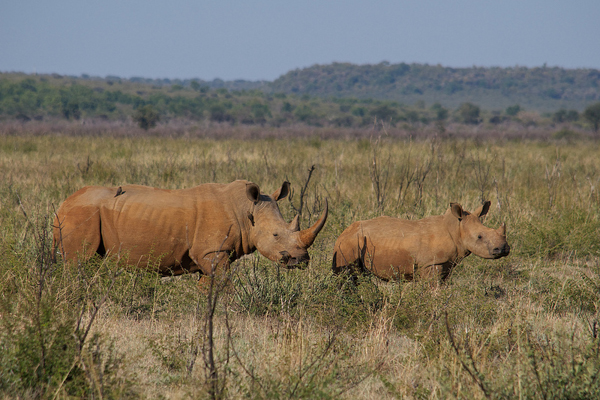
Before coming to Kruger, I’d been in Eastern Cape Province, 1,500 kilometres (930 miles) to the south. For 10 days I’d talked to rhino stakeholders about how the province was changing from a sanctuary from rhino poaching to a new hotspot. Many rhino owners suspected insider involvement in poaching and were cautious about sharing information with anyone.
One game reserve owner who didn’t want to be named was as terrified as he was disgusted by the syndicates. A syndicate member had phoned him and he felt intimidated. He seemed paranoid when I contacted him. “You’re an idiot if you think I’m going to talk to you on the phone. Who are you? I don’t know who you are,” he barked at me. He’d been called several times by a Vietnamese syndicate member, who brazenly asked him to supply horn. The rhino owner said everyone else had been contacted but they wouldn’t admit it. He’d seen him at cafes; he knew who the Vietnamese man was, and everyone else did too, he said. He’d started off really passionate about cooperating with the police to get the man, but it had been a waste of time and he no longer cared or wanted to know anything about rhinos.
“Nobody’s told me anything about this,” I said.
“It’s just exposing ourselves to danger, it’s not worth it. Did they give you the bleeding heart story?”
“Yes that’s the only story they gave me.”
“They’re not telling you anything. Everyone was told: ‘Keep your nose out’… The people who are doing it have no scruples… People get murdered… It’s very organised. It’s going to carry on and nobody can stop it.”
After that phone call I felt like I’d been clapped in a pillory and pelted with rotten tomatoes. I reflected on the interviews I’d done in the Eastern Cape. He was right. There was a lot that people wouldn’t tell me. I’d asked questions like: Do you know who the poachers were? Do you know who paid them? or Who is investigating? or How is the investigation going? or Where are the Vietnamese? Their answers were unsatisfying and I’d felt it. Was it diplomacy, was it fear, was it manipulation, or futility? I should have pressed harder.
A day after talking to the antipoacher I visit the town of White River, near Kruger. Jan Sutherland meets me in the parking lot in front of his office at the South African Hunters and Game Conservation Association. It’s lunchtime and hot. Sutherland is friendly and straightforward, dressed in work clothes. Dirt is under his nails and on his boots. We talk in the association’s dusty lunchroom. He says, hunters do a lot for rhino conservation because the hunts give rhinos a monetary value. It’s only because of hunters that farmers have started breeding wild animals instead of culling them. There are one or two bad apples in the hunting community but “hunters are very close knit” and they “eliminate bad apples as far as possible,” he says. Sutherland won’t name names or places but he knows of professional hunters or hunting outfitters who have been called by syndicates. He says it also happens to wildlife veterinarians.
Thorns and Roses
The moral hazards for anyone with rhino conservation responsibilities are real. Rhino crime has a reputation for big bucks. It’s a temptation. At legal wildlife auctions held in South Africa, a live rhino can fetch a breeder or a game reserve about $30,000. Killed for its horn, the same rhino could be worth 10 times more — $300,000. Honest men and women can turn, particularly if they have financial woes. And with the added need for costly rhino antipoaching teams, many game reserves don’t want the expense of keeping rhinos on their properties.
Weeks before I went to Kruger, on my tour of Eastern Cape Province, I met Jacques Matthysen, who goes by Matt. He’s the Assistant Head Ranger at Kariega Private Game Reserve. A group of poachers had mutilated three rhinos at Kariega in 2012. Only one survived the attack, a female named Thandi. She had multiple facial injuries, about 50, which the poachers inflicted with a machete while cutting off her horn after darting her with veterinary drugs.
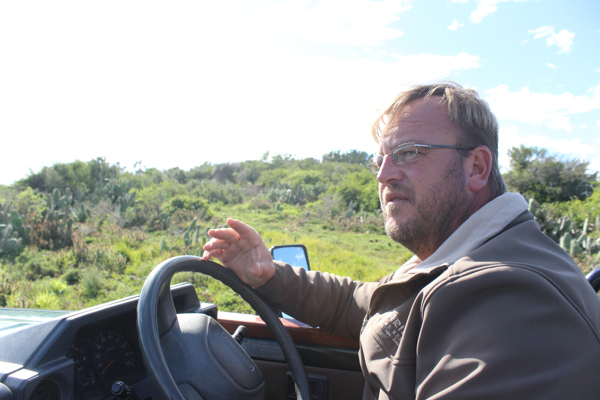
The use of dart guns with veterinary immobilization drugs in poaching attacks is more common in the Eastern Cape than in Kruger. The reasons are tactical, not ethical. Firing a dart gun is silent, so antipoachers working on reserves much smaller than Kruger’s nearly 20,000 square kilometers (7,700 square miles) won’t hear poachers’ rifle shots. Another reason is that a poacher with a dart containing a triple dose of a powerful opioid like Etorphine (aka M99) doesn’t need good bullet placement. So long as he hits the rhino somewhere the animal will stagger and fall. The antipoacher near Kruger said poachers using hunting rifles manage only to wound a third of their targets, allowing them to escape. He said the fact that a lot of wild rhino carry bullet wounds is an unreported result of the poaching crisis. He also said that although many poachers use noise suppressors on their rifles, “they are not silent like they are in the movies. The sound travels for two or three kilometres depending on the wind.” And he said to fit a suppressor to a rifle the sights need to be removed so accuracy is very poor.
Matthysen, who had worked with Thandi for over eight years, loved the rhino “like family,” and witnessed her recovery, was cynical about trusting anyone. He had an expression for people in the game industry: “thorns and roses.” A man with heart, he gave me a lot of his time. But he seemed careful about what he said. We talked a whole morning on a personal safari tour of the reserve in an open-top Land Cruiser, but he wouldn’t comment on his suspicions about who did it.
Veteran South African TV journalist Sandy McCowan describes the emotional impact of covering a triple-rhino poaching at Kariega Private Game Reserve in Eastern Cape province. Video credit: Mic Smith.
Instead he summed up his frustrations: “A policeman got busted last week with a rhino horn in the boot of his car and got out with 500 bucks bail. They are supposed to be protecting our legacy.” You might be able to trust somebody but how can you know the guy up the line from him can be trusted? “Thorns and roses. It’s hard to know who to trust so the reserve relies primarily on its own Reserve Protection Agency,” he said. Kariega’s rhino information was confidential. For instance, I wasn’t even told such basic information as how many rhinos were on the reserve. The same went for all visitors.
Dale Howarth spoke a very British English on the phone. I called him after I left Kariega because his game reserve, Pumba in Eastern Cape Province, lost six breeding rhinos to poachers last year. He said his own staff had supplied confidential information about the reserve’s operations and the rhinos’ whereabouts to the poachers. “My head ranger and two senior rangers failed dismally in the polygraph,” he said. He disbanded his whole antipoaching team as a result and replaced it with a team he “100 percent” trusted. The attack had damaged his game reserve’s reputation, as well as his breeding stock. “The first three [rhinos] were found by a morning game drive. Not the type of thing a guest wants to see. Horrific, horrific, horrific,” he told me.
Howarth said he had complete confidence in the investigating police, a new provincial task team dedicated to investigating rhino crimes that is composed of five officers from the Hawks, as the Directorate for Primary Crime Investigation of the South African Police Service (SAPS) is known. Prior to the appointment of these five, a high-ranking Hawks officer had blocked investigations of over 50 rhino poachings in the Eastern Cape. He’d been sacked and replaced by this new task team, which Howarth and other private rhino owners vouched for.
A few days after I spoke to Howarth, a different game reserve owner not far from Pumba made a gruesome find on a remote part of his property. Three of Elvin Krull’s rhinos had been shot dead with high-calibre rifles, their horns hacked off with axes. By a sad coincidence it was Krull’s 80th birthday. Elvin Krull was one of the many cattlemen in the Eastern Cape who seen the profits to be made from breeding game. He turned his vast cattle property, Tyityaba, into a successful game and hunting reserve. Eleven days after that first grisly find he found another three rhinos shot dead, their faces badly mutilated, horns gone. “It’s not nice to see big animals like this lying dead with their faces hacked off,” he told me when I called after the second incident. Judging by the way the rhinos were tracked and the placement of the bullets that killed them, the job was done by a professional hunter who knew the reserve, Krull told me.
Div de Villiers, the senior manager of compliance and enforcement at the Eastern Cape Department of Economic Development, Environmental Affairs and Tourism — otherwise known as Nature Conservation — investigated both incidents at Tyityaba. De Villiers said the rhino-poaching situation in the Eastern Cape was “very tense” and “any information has to be shared very carefully.”
Juan de Beer is the manager of the Investigation Unit of the province of Mpumalanga’s Nature Conservation department. “Busy,” is his description of rhino poachers. They don’t let him sleep, he says. He meets me at the provincial Nature Conservation office on the outskirts of the province’s capital, Nelspruit, a short drive from Kruger. De Beer doesn’t want to be photographed, because of his undercover work, but he is fine with being quoted.
He investigates levels 1 and 2 of the rhino horn syndicates: the poachers are level 1 while the buyers and the guys who coordinate poachers are level 2. In Mpumalanga, his unit has arrested level 1 up to level 4, the middlemen who link directly to the syndicate kingpins in Asia. Those cases are currently before the courts.
When I called him to arrange this meeting two days ago from Kruger, de Beer was at the scene of a double rhino poaching at one of South Africa’s most luxurious game reserves, Sabi Sands on the western border of Kruger. “The areas bordering Kruger are just as busy [with poaching] as Kruger itself. They attack everywhere,” he said over the phone. He wouldn’t tell me anything about his investigations but I found out more details from an anonymous source.
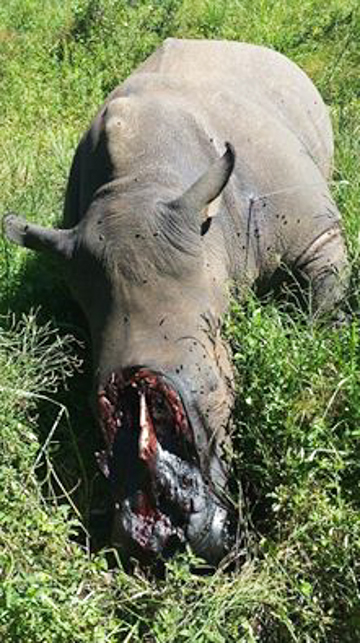
The Sabi Sands poachers had been well organised. The trio — shooter, machete hacker, and lookout — had breached the security fence through a hole on the South African side, shot a pair of rhinos and removed the horns. Once back outside the reserve they would have been met by a driver at a pre-arranged spot and taken to a poachers’ safe house in one of the hundreds of black towns along Kruger’s western border. They’d have stayed there until it was safe to deliver the horns and the hunting rifle to the poaching coordinator/buyer (syndicate level 2). The buyer was likely to be Mozambique-based because law enforcement is much “hotter” in South Africa. But he could also have been in one of the South African towns along Kruger’s western border, the source said.
It’s almost 5 pm and de Beer sits opposite me at a huge boardroom table. He says I can ask him anything but he may not answer. His “no comment” response characterizes most of the interview. Investigations into rhino poaching are growing more and more forensic, but Mpumalanga’s Nature Conservation investigator can’t reveal his methods. He says, however, that at Sabi Sands the poachers’ bullets had passed right through the animals, leaving no ballistic evidence. Evidence to convict is vital; without it there’s no case even if the culprits are known, as many are. On a perfect day rhino crime units can access ballistics, fingerprinting, DNA, cell-phone analysis technology — tools a lot of South African murder investigations go without. (According to SAPS’s 2013/14 Factsheet there were 47 murders and 47 attempted murders each day in South Africa). But de Beer doesn’t strike me as a man who has many perfect days. “Welcome to Africa” is the catchcry. He tells me he believes links exist between the rhino syndicates and the big syndicates dealing in gold, diamonds, and drugs, plus weapon-smuggling and vehicle-theft gangs.
De Beer can’t talk for long because it’s nearly knock-off time and he’s got to help his wife, whose car has broken down. I don’t want to hold him up, because if I’d broken down on the road I certainly wouldn’t feel safe. For a woman it would be worse. Apparently women don’t have to stop at traffic lights (called robots in South Africa) if they feel threatened.
De Beer has the sturdy appearance that I am beginning to associate with all white male South Africans. Thickset, blond, strong white teeth, and big calves. His experience at the coalface of poaching tells him the level 1 foot soldiers and level 2 poaching coordinators that he’s after are a combination of “something of everything.” Black, white, Mozambican, South African, Afrikaner, rich, poor, he says. In 2014, 92 rhinos were poached in his Mpumalanga jurisdiction, which doesn’t include Kruger, but poaching activity in 2015 has started with a vengeance. “From January 1 [to the end of February] there hasn’t been a let up… It’s like an organised crime centre, highly planned, highly organised.” He has no suspects yet in the Sabi Sands case.
Brigadier Hangwani Mulaudzi is only three weeks into his new role as spokesperson for the Hawks, who according to SAPS are officially responsible for “serious organised crime, serious commercial crime and serious corruption,” when I catch him on the phone after talking to de Beer. The Brigadier says the Hawks aren’t claiming to have made any breakthroughs in the syndicates. There are a lot of arrests of foot soldiers, poachers from Mozambique and South Africa (particularly in the northern provinces Limpopo and Mpumalanga), but the kingpins are evading arrest. “There are park rangers who have been arrested, for being spotters, some involved in killing of rhinos,” Mulaudzi says. “We know for a fact that our neighbor Mozambique is where most of the horns are passing through.”
Moral hazard
Peter Britz is an expert in illegal South African abalone syndicates with Rhodes University in Grahamstown in Eastern Cape Province. I met him at his beachside home in Port Alfred shortly after I spoke to Howarth. He said the country’s booming illegal abalone trade and the illegal rhino-horn trade had similarities: escalating prices have caused a gold rush, and the government is unable to deal with the socio-political and economic drivers. In both cases Britz said he believes that legalised trade is the only way to stem illegal demand and make trade sustainable. Because he shares their views, leaders of the Private Rhino Owners Association (PROA) invited Britz to speak at a committee meeting with South Africa’s Environment Minister, where he argued for legalizing the trade in rhino horn. The stance of PROA and SANParks is the same: as long as there is a demand for rhino horn, a sustainable means of supplying it must be developed to save the wild species.

Britz brewed me a coffee while we talked in his kitchen. In addition to saving the species, Britz argued that legalising the trade would save people in the game industry. He worried that the laws against the rhino horn trade were turning good people into criminals. “Apparently some of these poaching incidents are actual deals where the rhino owner goes away for the weekend, the rhino gets poached, and a brown bag gets passed under the table,” Britz said. The industry suffered when honest men turned that corner, he said. The industry needed ways to protect them.
Britz said the incentives for private rhino owners under the current laws are “perverse.” When stakeholders in the South African game industry advertise or attend wildlife sales or auctions, the going price for a living rhino of $30,000 is a fraction of the price of the same rhino’s horn on the black market in Vietnam. Legal trade in rhino horn has to be a part of the mix or people will go to the dark side, Britz said. He admitted that approach carries the risk of people laundering illegal horn through the legal side of the trade, as the Chinese syndicates do with abalone. Legal quotas are strict compared to the unlimited catches possible for poachers. His research into the abalone syndicates showed it is often the same people on the legal side as on the illegal side. “When you have these high value products it’s difficult for legal honest people who want to have a business to stay clean,” he told me. He said the situation presented a “moral hazard” that was widespread throughout the game industry.
Tom Milliken, head of the rhino and elephant program at the international wildlife crime monitoring group TRAFFIC, does not agree that legalizing the horn trade will solve the moral hazard. I first spoke to him by phone while I was in the Eastern Cape, about a week before I met Britz. We talked for an hour. I found him extremely approachable and knowledgeable about the rhino-horn trade, so after I spoke with Britz I emailed Milliken to get his views on Britz’s comments. “There is no guarantee that a legal trade will remove those perverse incentives and you may, as with other forms of wildlife trade… end up with two parallel streams of trade,” Milliken wrote. “We do not yet have a grip on the level of demand, we do not understand the role of speculation in the trade, we do not know if a legal trade will simply increase the number of consumers.”
Hawks spokesperson Brigadier Hangwani Mulaudzi knows about moral hazards. “If we are able to arrest our own members from police and park rangers, people from ports who have been paid for the horns to pass through, we can’t rule out corruption as a problem,” he tells me by phone. A recent case involved the head of conservation at SANParks, Hector Magome. Magome was suspended last year for teeing up sales of 260 live rhinos from Kruger to hunting outfitters for 80 million rand (about $26,000 each), allegedly without approval from the SANParks board. The deal was cancelled while investigators looked into it. In February this year, news came out that to fix rhino poaching the Hawks teamed up with a who’s who of South African intelligence: SAPS’s Crime Intelligence Division and its National Intervention Unit (which specializes in hold-ups of armoured security vans, so-called “cash-in-transit” crimes), the State Security Agency, and Defence Intelligence. The hydra-headed “Task Team” went into Kruger.
But was injecting more intelligence operatives into the epicentre of rhino poaching wise? South Africa has a culture and history of military and police intelligence being unaccountable to the government. South African stories of secret operatives with rhino, lion, zebra, and elephant blood on their uniforms are well documented over the last 50 years.
Retired army major general Johan Jooste of SANParks has the reputation up and down the country for being the man to talk to about the fight against rhino poaching. With a strong Afrikaans accent, the Commanding Officer for Special Projects, who is in charge of Kruger’s antipoaching program, is the go-to source for media. He agrees to meet me while I’m in Kruger but his duties get in the way so a phone interview a few days later has to suffice. “Poachers give up buyers when they are caught,” the General says. But the syndicates usually operate so the poachers don’t even know who the other poachers in their team are, let alone who the next link up the chain is. “It’s worked in such a way that it is not easy to trace back,” he tells me over the phone.
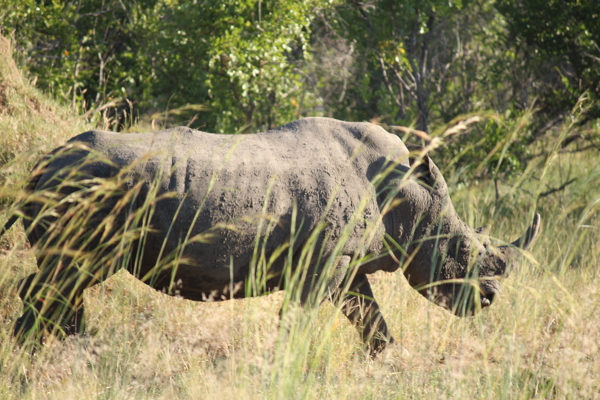
Some black villages among the hundreds along Kruger’s western border, from Mtshawu to Bushbuck Ridge, have prospered from rhino money to some extent, but not as obviously as towns in Mozambique. In villages where buyers live, extended families and businesses have profited by laundering their money, the General says. So poachers who have been arrested can face a grave risk when they’re released and they return to their bosses and homes if they’re suspected of cooperating with authorities. Poachers who talk are given some protection by SANParks or police, Jooste says. His strategy is to clear the park of poachers from outside. Of the 386 poachers arrested last year, 212 were captured outside the park. “You don’t try a stop a burglar once he’s in your home, you stop him coming in,” the General points out.
Despite media reports of SANParks officials arrested in connection with rhino horn, the General says he doesn’t have any evidence that people in the park authorities are involved, but outside the park where rhino poaching is a police matter it could be a different story. “There might be involvement,” he says. “Rhino money buys many people at all levels.”
Syndicate levels 3,4, and 5 are not in the General’s brief. They are in the police’s brief.
After speaking to the General I leave Kruger for a few hours to talk to a taxidermist, but he cancels at the last minute. On my way back, the police pull my car over just outside the main entrance to Kruger. I ask the black policeman at my window what the problem is. He says I was doing 80 in a 60 zone. I’m surprised.
“It’s 80 here isn’t it?”
“No, there is a sign back there saying 60. It’s 60 all the way from the turn off.”
The uniformed officer is right. He checks my licence. “Michael Scott Smith from Australia.”
He pulls out a clipboard and checks down a grubby list of infringements to see how much my fine is: 1,000 rand. I pay without hesitating. He explains he will pay it at the police station and that I can pick up the receipt later if I want to. I say I will, but shouldn’t he give me a receipt now so I can pick it up? He replies, “You do understand what I am saying.” I nod, not believing the police corruption can be so brazen on the doorstep of Kruger.
The number of South African Police Service officers is 157,470. In August 2013, SAPS admitted that 1,448 serving police had committed serious crimes. A significant number had been convicted of multiple crimes. The serious crimes ranged from murder and attempted murder to rape, assault, corruption, theft, robbery, house-breaking, drug trafficking, domestic violence, and aiding escapees. At least 64 of them were still based at police headquarters last year. And as of last July, all 1,448 police apparently remained on active duty, the police union having played a part in protecting them.
While that sounds bad and is bad, South Africa is an angel compared to its neighbor Mozambique, where rhino horn poachers are celebrated, syndicates protected, and arms for poaching supplied by the police and military. In a recent case, a Chinese man was arrested by police in the Mozambique capital, Maputo, with 65 rhino horns and 340 ivory tusks. A week later the horns and ivory disappeared from a police warehouse.
“Everyone wants the money.”
The southern end of Kruger is ideal open country for white rhinos. A large percentage of Kruger’s poaching incursions from South Africa and Mozambique occur there along the Crocodile River. My stay in Lower Sabie last night marked my fourth and last sleep in Kruger. It’s been mega to see so much wildlife up close. From the camp at Skukuza, 200 kilometers (124 miles) north to the camps at Satara and Olifants, then backtracking south 250 kilometers (155 miles) to Lower Sabie, there hasn’t been a mile without an animal sighting.
In the morning I order breakfast before the 20 kilometer (12 mile) drive to Crocodile River. The young black waiter tells me about a large crash of rhinos that sleep on the doorstep of the Crocodile Bridge camp. For protection, he says. “The rhinos stay near the camp — they are too scared to go outside.” Tourists see them every day. Rhino poachers swim the Crocodile River, he says: “Have a drink, know the rhino so he can kill him.” He talks about the river water like it has magical properties. The men can sell the horns on the South African side, or go to Maputo over the border in Mozambique, where they might get bigger money but also risk getting ripped off. “Everyone wants the money,” says the waiter.
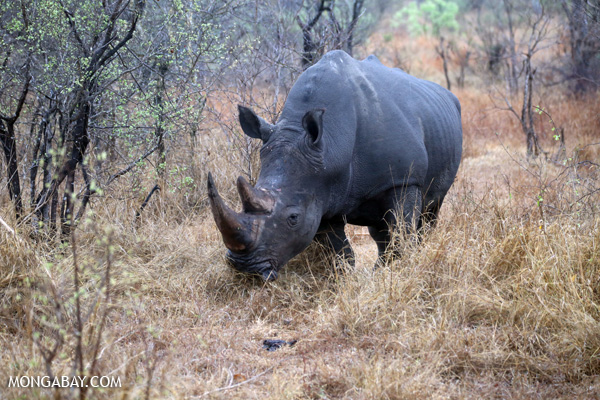
Thirty minutes from Kruger’s main Skukuza gate is the town of Hazyview. I go there to interview a rhino breeder who also has his own antipoaching (he protects all game, not just rhino) and professional hunting businesses. It’s a bonus for me because he can present a range of perspectives.
I get lost in Hazyview because my GPS stops working. But it comes good again and directs me to the source’s kids’ private school. We’d arranged to meet at the school’s Sports Day, where a mix of well-off black and white kids from schools around the province compete in track and field. A woman in her thirties observes me while I wait. I check my phone for texts from the rhino breeder. He’s late. After an hour, the woman guesses I’m the journalist her husband is hurrying to meet. “You don’t look South African,” she says. “He’s just a few minutes away.”
Because he’s late and I need to get back I ask the breeder, who doesn’t want to be named, if we can talk in the school’s parking lot. He agrees, nervously. He won’t talk within earshot of other parents. “It will get back to the poachers that I was talking to a journalist,” he says. He gets in the car and turns on the motor and radio so people around can’t hear us. Shows me a photo on his phone of one of his antipoaching staff with his throat cut. White pipes poke out of the wide gash. His wife and daughters wait outside the car while we talk. “It’s ok. We’re used to it,” his wife says. He shows me one of his company uniforms. It has a stab hole in the middle of the chest from last night. “He’s in ICU.”
Will I be ok when I drive away from here? I ask. Yes.
South Africa, Swaziland, and Namibia are the only countries in the world where rhinos can be hunted for sport. As a holder of a professional hunter’s licence in Mpumalanga, the breeder had worked with “lots of the Vietnamese” on pseudo hunts during their heyday— those hunts where the client isn’t a real hunter, but wants the trophy (the rhino head) only for its horn. The process of setting up one of those hunts was complicated. Many people were involved, but it was worth it because the Vietnamese offered more than the advertised price for an ordinary rhino hunt.
A typical pseudo hunt scenario would go like this. The Vietnamese clients, usually through a local Vietnamese broker, would reply to an ad for a rhino hunt on a hunting outfitter’s website. The outfitter supplied a hunting permit and a preliminary CITES permit to export the trophy from the province’s Nature Conservation department. He also provided a professional hunter to assist the client. The deal would be set up and the rhino translocated to a game reserve, paid to host the hunt. The Vietnamese client would arrive in South Africa, come straight to the game reserve, and do the hunt as fast as possible. During the hunt, at which a representative from Nature Conservation must be present, the professional hunters sometimes had to physically assist Vietnamese clients who had never held a gun to aim the weapon so he or she only had to pull the trigger. This was technically illegal as hunting permits state that the hunter must shoot the animal. Then the horn needed to be microchipped by the Nature Conservation official. The hunting outfitter sent the skin and head to a taxidermist to prepare a trophy with the horn and then the taxidermist signed off on the export permit. Pseudo hunts were, in effect, a lot of playacting undertaken to legitimize the sale of a rhino horn.
Between 2003 and 2010 at least 329 rhinos were hunted with legal permits by Vietnamese nationals. These so-called hunts and trophies cost them in the vicinity of $20 million in trophy fees paid to hunting outfitters, but the horns would have netted anywhere between $200 and $300 million on the black market in Vietnam. The government made a big mistake by stopping those hunts, the breeder says.
He talks about the days of Vietnamese pseudo hunts like they were innocent days before the syndicates took over, but they weren’t innocent. CITES reported that only 13 rhinos were killed illegally in South Africa in 2007, but the pseudo hunts that year were the real issue. Nearly nine out of 10 horns that “legally” left South Africa from 2003 to 2012 were not declared to Vietnamese airport customs, nor was the export permit surrendered so it couldn’t be reused. The influx of CITES-permitted horns from southern white rhinos (which are listed as CITES Appendix II) stimulated the demand for rhino horn in Vietnam and drove prices upwards, further encouraging illegal activities. Pseudo hunts also let the Vietnamese syndicates get a foothold in South Africa.
When I ask the breeder where the local Vietnamese who brokered all those hunts are now, he claims he doesn’t know. However, Julian Rademeyer, the South African investigative journalist and author of Killing for Profit: exposing the illegal rhino horn trade, told me in Johannesburg earlier that he suspected one of the big Vietnamese agents was still based in Pretoria. The agent had worked with South African game industry white guys known as “Boermafia” (farmer mafia). The most written-about of these Boermafiosi was rhino hunter and game-reserve owner Dawie Groenewald, who in 2011 faced 1,736 counts of racketeering, money laundering, fraud, intimidation, illegal hunting, and dealing in rhino horns. In Killing for Profit Julian Rademeyer quoted Groenewalde after he was charged saying “I’m so fucking angry at the system that I want to shoot as many rhinos as I can get.” Today, while awaiting trial, Groenewald is still able to purchase rhinos at auction and has many influential friends in the industry.
The breeder shares Groenewald’s anger at the system’s perceived unfairness that none of the big money for rhinos is going to the South Africans who own them. He says it wasn’t necessary to kill all those rhinos he’d helped kill on the pseudo hunts. He admits the Vietnamese had only wanted the horns, not the trophies. But the law required a trophy to get the horn out of the country. The rhino breeder says “green hunts” in which the rhino is immobilized with a tranquilizer dart and the horn sawed off before the animal regains consciousness and goes about its business, would have been a humane solution to the crisis both then and now. But South Africa effectively banned green hunts in 2010. The breeder can’t understand why.
Pseudo hunts still happen, but the syndicates are recruiting Czechs or Russians to bypass the ban on Vietnamese hunters. The CITES Czech Environmental Inspectorate reported that Czech authorities were investigating extensive illegal trade in white rhino horns imported to the Czech Republic from South Africa and sold on, probably to Vietnam. “Organizers of this trade were connected to the Vietnamese community and recruited persons of the Czech nationality. These persons weren´t real hunters, they didn’t have a license for keeping guns, they weren´t members of any hunting associations,” the report stated.
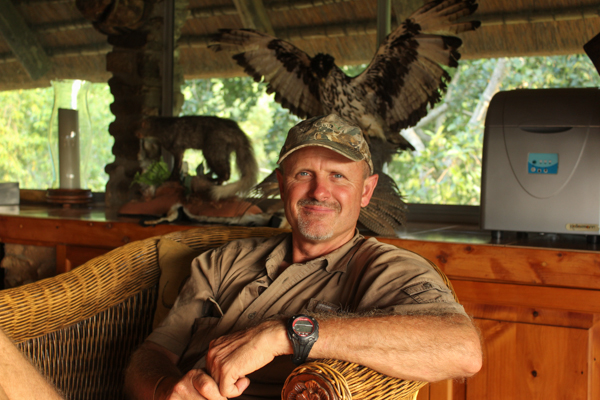
A hunting outfitter I’d visited in Nelspruit before coming to Kruger, Henk Coetzee, had taken a Russian to legally hunt an old black rhino for $150,000 in 2014. “It’s scary how much is spent in South Africa by overseas hunters,” he said. When the Russian had killed the rhino, Coetzee had his taxidermist make the trophy with a fake horn, packaged with the real horn for export. “He was not a good hunter. What happened to that rhino horn I cannot tell you,” Coetzee said.
Like fish in the water
I’d met Julian Rademeyer for coffee in the middle class Johannesburg suburb of Melville a few days before coming to Kruger. Baby faced with a brilliant mind and beautifully spoken, Rademeyer spent three years writing his 2012 book Killing for Profit, but he had stopped following the rhino-horn trade closely because of other projects. He said he believes the syndicates were successful because they were adaptive. He suspected that most of the Vietnamese agents, the Level 3 and 4 kingpins with direct links to the bosses in Asia, had moved recently from South Africa to Mozambique, where they could operate with relative impunity.
Julian Rademeyer, South African investigative journalist and author of the 2012 book Killing for Profit: exposing the illegal rhino horn trade, describes how the rhino-horn syndicates operate. Video credit: Mic Smith.
In Vietnam: the ten thousand day war, the author, former CBC Far East correspondent Michael Maclear, quoted a former Viet Minh (aka Viet Cong) guerrilla: “The Viet Minh were like fish in the water. It was our motto. Our fighters moved and worked among the people like fish in the water.”
The analogy resonates today. Not once during my stay in South Africa was I far from an illegally slain rhino, but I never saw or heard anything about the Vietnamese or the Chinese behind the poaching. General Jooste didn’t even think the Vietnamese were in South Africa. He said the idea that Vietnamese syndicates had moved to Mozambique was “a bit far fetched.” The big syndicates move and work very quietly among the people. The kingpins have agents throughout South Africa, just as the Viet Cong had agents in South Vietnam during the Vietnam War, where the Americans didn’t know whom to trust as a friend or fear as an enemy.
In the courts things were just as fishy. Many Vietnamese on trial, most of them couriers, took advantage of their South African constitutional right to be tried in their own language. Several Vietnamese translators, whom the courts employed, were tied to syndicates themselves and provided false translations or delayed proceedings so much the trial was thrown out. In other cases the translators seemed to have been threatened and didn’t return.
On the day that I leave South Africa I check in at Durban’s King Shaka International Airport. The airline check-in lady is from Mthata, the town famous for the house the community built for Nelson Mandela when he was released from prison. I mention this and she tells me she had pasted all the news clippings from when Mandela had died in a coffee-table book as a record of the “precious” man. While the queues get longer behind me, she tells me of the oppression she experienced as a child compared to the happiness she experiences now, how Madiba had made the world know South Africa for its hero of peace and freedom.
I’m moved because Nelson Mandela has always been a hero to me. “I can see that in your eyes,” she says. I tell her the antipoacher had told me the plight of the rhino was the “worst wildlife crisis that anyone in South Africa had ever seen.” She says Madiba was a kind man who did not believe in inflicting pain or suffering on either people or animals. He loved animals. She feels South Africa is straying from the direction that the ANC under Mandela had set. I can see it in her eyes as I say farewell.
“The continent of Africa is well aware of the importance of the environment. But most of the continent’s problems on environment are simply the product of poverty and lack of education.”— Nelson Mandela
This article was first published by Mongabay.com on 05 JUn 2015.
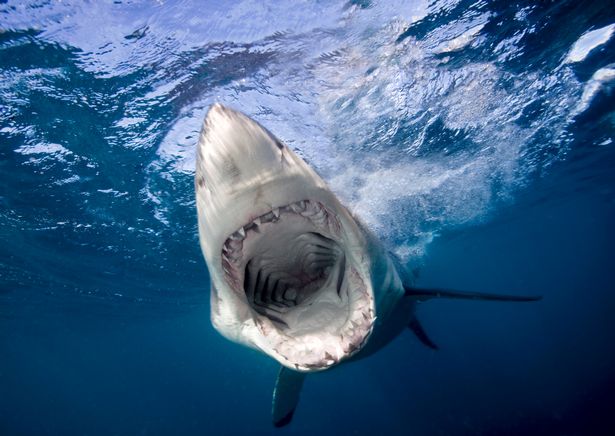
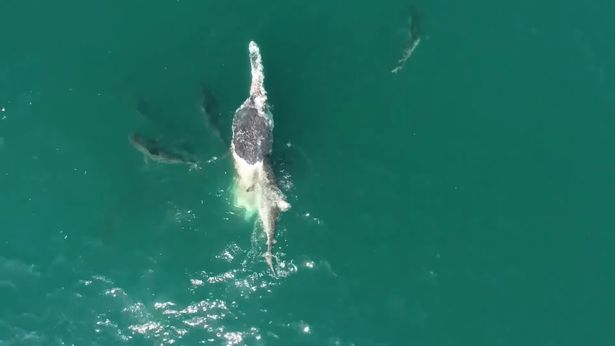
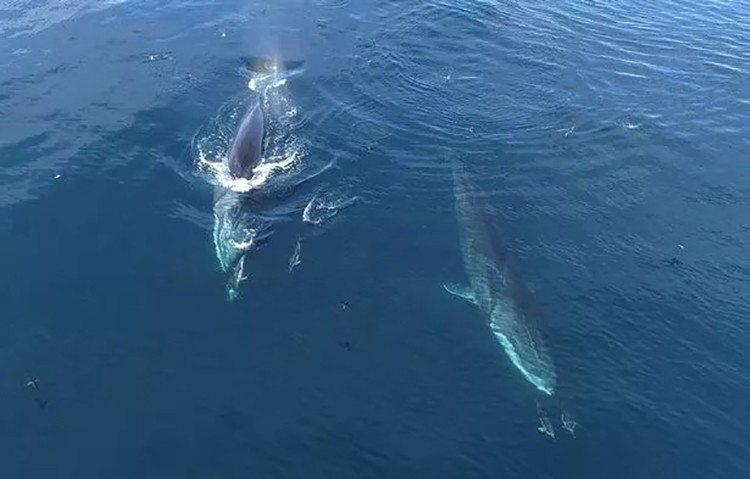

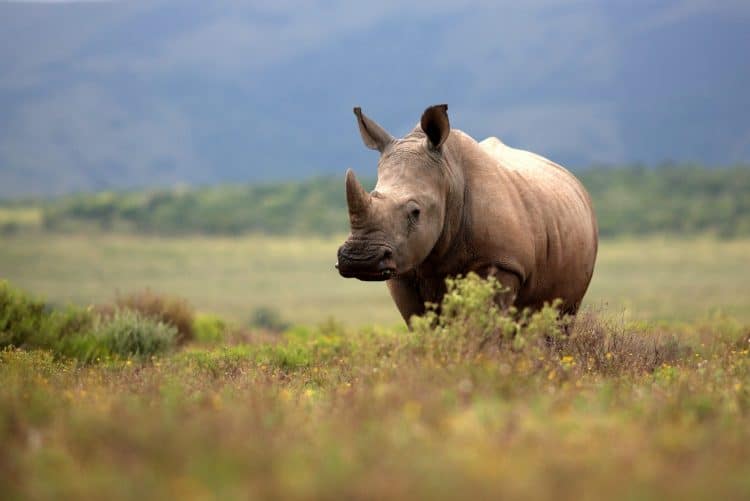

Leave a Reply